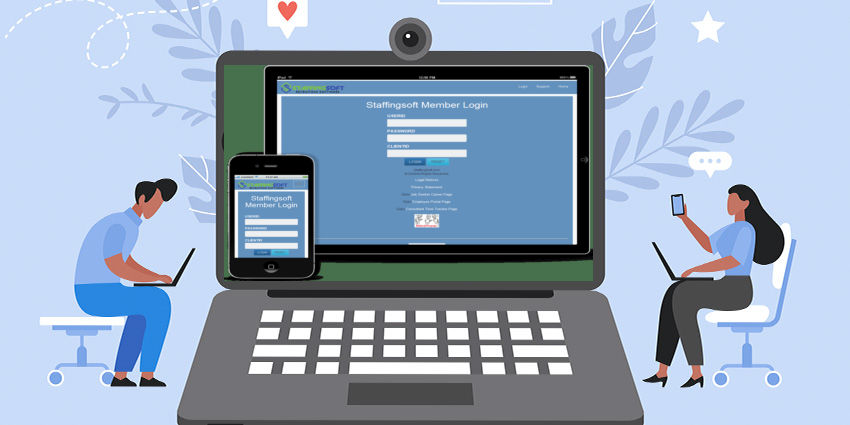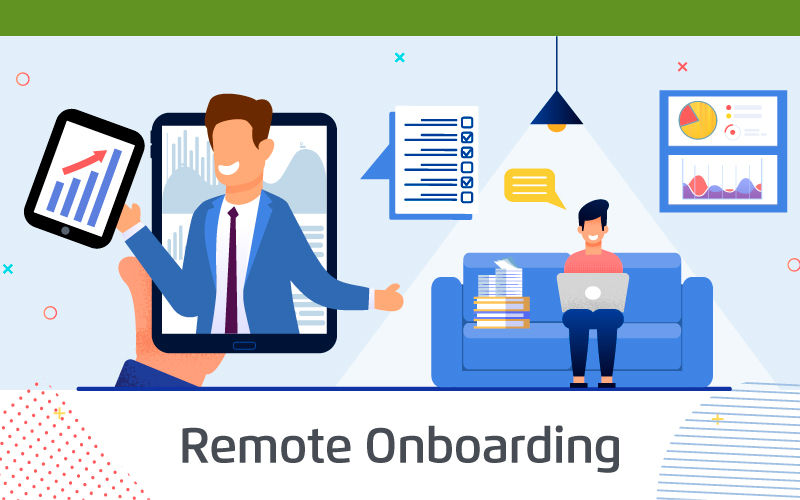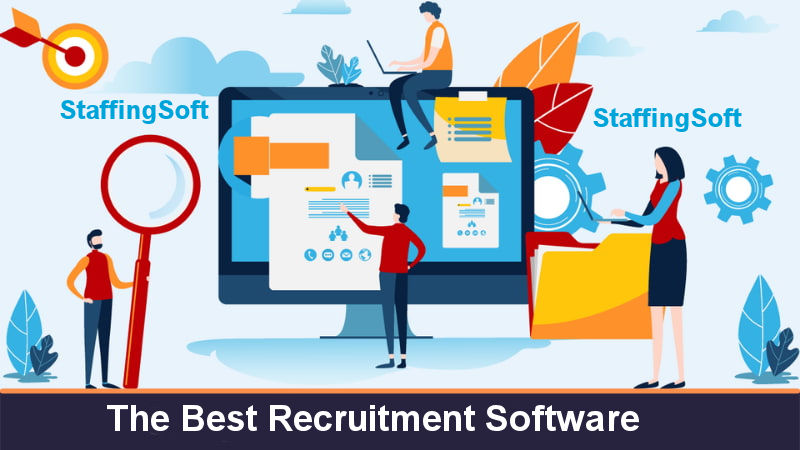Are you tired of sifting through piles of resumes, conducting countless interviews, and still struggling to find the right candidate? It’s time to revolutionize your hiring process with the best recruitment software solutions. These innovative tools are designed to streamline your recruitment efforts, saving you time, money, and headaches along the way.
With the right recruitment software, you can automate repetitive tasks, such as resume screening and scheduling interviews, allowing you to focus on the most crucial aspect of hiring – finding the perfect fit for your organization.
These solutions also offer advanced features like applicant tracking, candidate assessment, and analytics, providing valuable insights into the effectiveness of your recruitment strategy.
Whether you’re a small business or a large corporation, there’s a recruitment software solution out there that can cater to your specific needs. From cloud-based platforms to AI-powered tools, the options are endless. So why waste any more time with outdated hiring processes when you can leverage the power of technology to attract top talent?
Take your hiring process to the next level with the best recruitment software solutions available today. Your dream candidate is just a click away.
Benefits of Using Recruitment Software

Mejorar la eficacia de la contratación - Software de dotación de personal
Recruitment software offers a myriad of benefits to organizations looking to streamline their hiring process. One of the key advantages is the ability to automate repetitive tasks, such as resume screening and interview scheduling, saving valuable time and allowing HR professionals to focus on more strategic aspects of recruitment. Additionally, these tools help in creating a more efficient and organized hiring process, reducing the chances of human error and ensuring a smoother candidate experience.
Moreover, recruitment software often comes equipped with advanced features like applicant tracking and candidate assessment tools, providing valuable data and insights to improve decision-making. These insights enable organizations to make informed choices when selecting the right candidates for the job, leading to better hiring outcomes and higher retention rates.
Overall, the benefits of using software de reclutamiento extend beyond just efficiency, contributing to a more effective and data-driven recruitment strategy.
Another significant advantage of recruitment software is its scalability, catering to the needs of businesses of all sizes. Whether you’re a small startup or a large enterprise, these tools can be tailored to suit your specific requirements, offering flexibility and customization options.
This scalability ensures that organizations can adapt their recruitment processes as they grow, without the need to switch to a different system, providing long-term value and investment in the software.
Common Features of Recruitment Software

Recruitment software comes with a range of common features that are essential for optimizing the proceso de contratación. One of the primary features is applicant tracking, which allows recruiters to monitor candidates’ progress throughout the recruitment pipeline, from initial application to final selection. This feature provides a centralized platform for managing candidate information, communication, and feedback, streamlining the entire recruitment workflow.
Another common feature of recruitment software is candidate assessment tools, which help in evaluating candidates based on predetermined criteria or assessments. These tools enable recruiters to make data-driven decisions by objectively measuring candidates’ skills, experience, and fit for the role.
Additionally, features like interview scheduling and communication tools facilitate seamless interaction between recruiters, hiring managers, and candidates, improving overall communication and collaboration during the hiring process.
Furthermore, many recruitment software solutions offer analytics and reporting features, allowing organizations to track and measure the effectiveness of their recruitment strategies. These insights help in identifying bottlenecks, optimizing processes, and making data-driven decisions to improve recruitment outcomes.
Overall, the common features of recruitment software are designed to enhance efficiency, accuracy, and effectiveness in the hiring process.
How to Choose the Right Recruitment Software for Your Business
Selecting the right recruitment software for your business is crucial to optimizing your hiring process and driving recruitment success. To make an informed decision, start by assessing your organization’s specific needs and objectives. Consider factors such as the size of your company, the volume of hires you make, and the complexity of your recruitment process to determine the features and functionalities you require in a recruitment software solution.
Next, research and compare different recruitment software options available in the market. Look for solutions that align with your organization’s goals, offer the features you need, and provide scalability for future growth. Consider factors like user-friendliness, customization options, integration capabilities, and customer support when evaluating software vendors.
Additionally, seek feedback from other users and read reviews to gain insights into the user experience and performance of the recruitment software. Request demos or trials from shortlisted vendors to test the software and evaluate its suitability for your organization.
Ultimately, choosing the right recruitment software involves a thorough assessment of your needs, research, and testing to ensure the software aligns with your recruitment objectives and enhances your hiring process.
Implementing Recruitment Software in Your Hiring Process
Implementing recruitment software in your hiring process requires careful planning and execution to maximize its benefits and ensure a smooth transition. Start by outlining clear objectives and goals for implementing the software, such as improving efficiency, reducing time-to-hire, or enhancing candidate experience. Define key performance indicators (KPIs) to measure the success of the software implementation and track progress against your goals.
Next, involve key stakeholders, such as HR professionals, hiring managers, and IT support, in the implementation process to ensure buy-in and collaboration. Provide training and support to users to familiarize them with the software and its features, enabling them to leverage its full potential. Develop standardized processes and workflows to ensure consistency and efficiency in using the software across the organization.
Moreover, consider integrating recruitment software with other HR systems, human resource information systems (HRIS), and performance management tools, to create a seamless and integrated recruitment ecosystem. This integration allows for data sharing, automation of processes, and a holistic view of the candidate lifecycle, enhancing overall recruitment efficiency and effectiveness.
Integrating Recruitment Software with Other HR Systems

Integrating recruitment software with other HR systems is essential for creating a cohesive and connected recruitment ecosystem within your organization. By seamlessly connecting recruitment software with systems like ATS, HRIS, and payroll software, you can streamline processes, eliminate manual data entry, and ensure data consistency across systems.
Integration enables real-time data sharing between systems, reducing duplication of efforts and improving data accuracy. For example, integrating recruitment software with an ATS allows for seamless transfer of candidate information from the recruitment stage to onboarding, ensuring a smooth transition and enhancing the candidate experience.
Similarly, integration with HRIS enables HR professionals to access comprehensive employee data, facilitating better decision-making and workforce planning.
Furthermore, integrating recruitment software with performance management tools provides valuable insights into employee performance and development, aligning recruitment efforts with organizational goals and strategies.
This integration fosters collaboration between HR functions, improves data visibility, and enhances overall HR efficiency. By integrating recruitment software with other HR systems, organizations can create a unified and efficient recruitment process that drives better hiring outcomes and employee experiences.
Case Studies of Successful Companies Using Recruitment Software
Numerous companies have successfully leveraged recruitment software to transform their hiring processes and achieve better recruitment outcomes. One such example is Company X, a tech startup that struggled with manual recruitment processes and high turnover rates.
By implementing a cloud-based recruitment software solution, Company X automated resume screening, streamlined candidate communication, and improved candidate experience, leading to a significant reduction in time-to-hire and an increase in retention rates.
Another success story is Company Y, a multinational corporation that faced challenges in managing a high volume of hires across multiple locations. By integrating recruitment software with their existing HR systems, Company Y created a centralized recruitment platform that enabled them to track candidates, share data seamlessly, and optimize their recruitment strategies.
This integration resulted in improved collaboration, data accuracy, and efficiency in their global recruitment efforts.
Additionally, Company Z, a retail chain, utilized recruitment software to enhance their candidate assessment process and improve the quality of hires. By implementing candidate assessment tools and analytics features, Company Z was able to objectively evaluate candidates, identify top performers, and make data-driven hiring decisions.
This led to a higher retention rate, increased employee satisfaction, and improved overall performance within the organization.
These case studies demonstrate the diverse ways in which companies have leveraged recruitment software to address their unique recruitment challenges, drive efficiency, and achieve successful hiring outcomes.
By adopting the right recruitment software solution and tailoring it to their specific needs, organizations can overcome recruitment hurdles, improve candidate quality, and build a strong talent pipeline for future growth.
Training and Support for Using Recruitment Software

Training and support are essential components of successfully implementing and utilizing recruitment software within your organization. To ensure a smooth transition and maximize the benefits of the software, provide comprehensive training to users at all levels, including HR professionals, hiring managers, and recruiters. Training should cover the software’s features, functionalities, and best practices for using it effectively in the recruitment process.
Offer ongoing support and resources to users to address any questions, issues, or challenges they may encounter while using the software. Establish a dedicated support team or helpdesk to provide timely assistance and guidance, ensuring that users can leverage the software to its full potential. Encourage feedback from users to continuously improve the software and address any usability concerns or enhancement opportunities.
Moreover, consider offering refresher training sessions, webinars, or user guides to ensure that users stay up-to-date with the software’s updates and new features. By investing in training and support for using recruitment software, organizations can empower their teams to make the most of the software, drive efficiency in the hiring process, and achieve better recruitment outcomes.
Future Trends in Recruitment Software Solutions
The future of recruitment software is poised for exciting developments and innovations that will further revolutionize the hiring process. One of the emerging trends is the adoption of artificial intelligence (AI) and machine learning capabilities in recruitment software, enabling predictive analytics, automated candidate matching, and personalized candidate experiences.
AI-powered recruitment tools are increasingly being used to streamline candidate sourcing, improve decision-making, and enhance the overall recruitment efficiency.
Another trend is the rise of mobile recruitment solutions that cater to the growing trend of mobile job seekers. Mobile-friendly recruitment software allows candidates to easily apply for jobs, track their application status, and communicate with recruiters on the go, enhancing the candidate experience and attracting top talent. Mobile recruitment solutions also provide recruiters with flexibility and accessibility to manage hiring processes anytime, anywhere.
Furthermore, integration with social media platforms and bolsas de trabajo is becoming a common feature in recruitment software, enabling recruiters to reach a wider pool of candidates and engage with passive job seekers.
Social recruiting tools allow for targeted ofertas de trabajo, employee referrals, and candidate networking, creating a more dynamic and interactive recruitment experience for both recruiters and candidates. This trend is expected to continue shaping the recruitment landscape and driving innovation in recruitment software solutions.
As recruitment software continues to evolve and adapt to changing market dynamics, organizations can expect more sophisticated features, intuitive user interfaces, and enhanced customization options to meet their evolving recruitment needs. By staying abreast of these future trends and adopting innovative recruitment software solutions, organizations can stay ahead of the competition, attract top talent, and build a strong and competitive workforce for the future.
Conclusion and Final Thoughts
Revolutionizing your hiring process with the best recruitment software solutions offers a wealth of benefits, from improving efficiency and accuracy to enhancing candidate experience and driving better recruitment outcomes.
By leveraging the common features of recruitment software, choosing the right solution for your business, and implementing it strategically in your hiring process, you can transform your recruitment strategy and attract top talent to your organization.
Integrating recruitment software with other HR systems, learning from successful case studies, providing training and support to users, and staying abreast of future trends in recruitment software solutions are key steps to maximizing the value of recruitment software in your organization.
By adopting a data-driven approach, fostering collaboration, and embracing innovation in recruitment technology, you can stay competitive in the ever-evolving recruitment landscape and build a strong and talented workforce for the future.
In the fast-paced and competitive world of recruitment, embracing technology and leveraging the power of recruitment software is no longer an option but a necessity for organizations looking to attract, hire, and retain top talent.
So, take the first step towards revolutionizing your hiring process today with the best recruitment software solutions available, and unlock the potential to build a strong and successful workforce for tomorrow.


